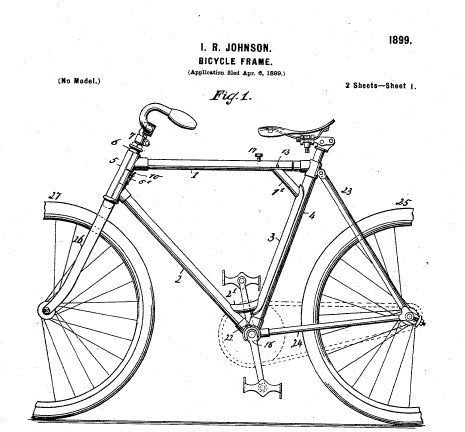He was a pioneer!
Recently, we’ve been spotlighting a number of Black inventors who created things that are still useful today. Among that list are inventors from the past and present like Dr. Patricia Bath, an ophthalmologist who invented the Laserphaco Probe for cataract treatment in 1986 and made history as the first Black woman to receive a medical patent. There’s also youth inventor David Price, creator of The Safety Pouch, a storage device that aims to make interactions between civilians and police safer and more efficient.
But behind the newer inventions stand century-year-old inventors who paved the way. Those like Garrett A. Morgan, a serial inventor who holds patents for an improved sewing machine, relaxer hair cream, a gas mask and the three-signal traffic light. And how can we forget about Sarah E. Goode, a former enslaved woman turned entrepreneur? It was Goode and her husband’s furniture store in Chicago that led to her invention of the “folding cabinet bed,” known today as the Murphy bed.
Most of Goode’s customers were working-class Black residents who lived in small apartments and didn’t have the space for full size furniture, especially not furniture that was the size of beds. The “folding cabinet bed” conserved space; it could simply be folded up and used as a desk, complete with stationary compartments that could hold various writing supplies. On July 14, 1885, Goode received the patent for the bed, making history as one of the first African-American women to receive a patent from the United States Patent and Trademark Office (USPTO).
These technological advances cannot go unnoticed and the inventors, their stories, and their work must be reserved for posterity. That’s why it’s important to us that you know about Isaac R. Johnson, inventor of the bicycle frame.
Johnson was born in New York in 1812. Not the first inventor to create a bicycle frame, Johnson was just the one to perfect it, becoming the first Black person to invent and patent the frame. It is Johnson’s version that is most similar to the bicycles we use today, and what made his so unique is that it could be easily folded or taken apart for storage. Johnson marketed the bicycle as convenient for travels and vacation.
He originally filed the patent in April of 1899, and it is that paperwork that gives us most of the information about Johnson. At the time, he lived in Manhattan and his invention was classified as an improved version of a bicycle frame, noting its ability to be placed in small storage areas or a truck. The bicycle came with instructions, notating each part.
In the section where he notes his reasons for the patent and what makes his invention different, Johnson writes, “a steering-head section and a frame having a slot-and-stud connection for detachably uniting,” and “a bicycle-frame having a front and rear sheath or tube-section, and a steering-post sleeve and seat-post tube to which the sheaths are removably connected,” Urban Intellectuals reports.

Originally, the bicycle was designed as a velocipede, a pedal-less version of the modern bicycle, Indego reports. It was inventor Matthew Cherry, creator of the tricycle, who made the first improvements to the design. In 1899, Jerry Certain would patent various “parcel carriers” that could be attached to the bike, Johnson coming after them with the closest patent to the modern bicycle frame design.
 Meet Isaac R. Johnson, inventor of the bicycle frame. 25th Infantry Bicycle Corps. Photo Courtesy of University of Montana, Mansfield Library
Meet Isaac R. Johnson, inventor of the bicycle frame. 25th Infantry Bicycle Corps. Photo Courtesy of University of Montana, Mansfield Library
Bicycles were tested at length after the Civil War when the United States Military tasked the all-Black 25th Infantry Bicycle Corps with riding the bikes 1,900 miles from Montana to Missouri. During the trek, they tested the bicycle’s suitability cross-country, cycling the Rocky Mountains and enduring extreme weather conditions, often traveling off-road. The group traveled at an average speed of 6 mph, taking 41 days total to finish the trip.
Here’s to recognizing Johnson’s achievements and all of our pioneering inventors. Because of them, we can!
Meet Isaac R. Johnson, inventor of the bicycle frame. Photo Courtesy of Urban Intellectuals/United States Patent and Trademark Office

